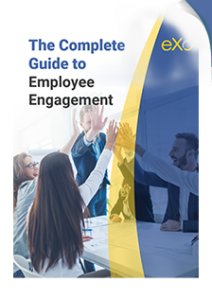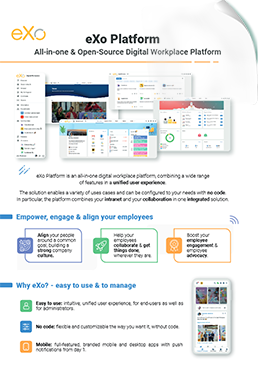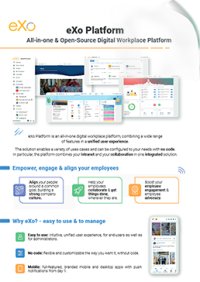


FREE WHITE PAPER
Discover our in-depth analysis of the concept of employee engagement, its roots, and ways to improve it significantly
Stress, burn-out, mental overload, loss of meaning… Mental health at work has become a major issue. The work disruptions in recent years (accelerated digital transformation, remote work, health crisis) and the current economic and social uncertainties have deeply changed our relationship with work, and put the employees psychological balance to the test.
According to the latest barometer by Qualisocial and Ipsos, 1 in 4 employees report being in a state of deteriorated mental health, directly impacting their engagement, productivity, and well-being at work

A collective awareness is slowly starting to emerge. Mental health is no longer the taboo topic it was a few years ago. It’s now seen as a driver of performance, attractiveness, and sustainability for organizations.
Could the digital workplace become an ally in improving mental well-being?
The digital workplace is no longer just a collection of digital tools. It offers a smooth, unified work experience, centralizing applications, content, internal communications and HR services.
In this way, it reflects the major changes taking place in the workplace:
But digitalization can also have negative effects in certain areas: technology-related stress, information and cognitive overload, dispersal of information, feelings of remoteness, confusion between work and private life, and hyperconnection.
Hence the importance of considering the digital workplace not only as a lever for productivity, but also as a tool for employee well-being.
Digital tools can give rise to many psychosocial risks, such as:
These risks are often the result of a lack of governance and a failure to educate people about how to use the system.
When the digital workplace is designed in a coherent, human-centered way, it becomes a powerful tool for preventing psychosocial risks. Firstly, it helps to better structure information streams by centralizing communications, reducing unnecessary interruptions and helping employees to prioritize their work. Well-organized digital spaces avoid the cognitive overload associated with fragmented tools and messages.
Secondly, a digital workplace can strenghthen the quality of the social bond, by recreating moments of informal exchange, facilitating interaction between remote teams and rewarding individual contributions through recognition mechanisms. It also offers a framework conducive to active listening, with regular feedback surveys and easier access to support resources or HR contacts.
Finally, by integrating time management features or promoting disconnection rules, it helps to provide healthy boundaries between professional and personal life. In practice, these levers can be translated into concrete tools, integrated into the digital workplace.

The Complete Guide to
Employee Engagement
Discover our in-depth analysis of the concept of employee engagement, its roots, and ways to improve it significantly



Discover our in-depth analysis of the concept of employee engagement, its roots, and ways to improve it significantly
Certain tools and features can play a key role in employee well-being when they are properly integrated into the digital workplace. Here are a few concrete examples:
These features are essential building blocks of a more human digital culture, which places well-being at the heart of the employee experience.
Gamification is an innovative tool for stimulating employee engagement and well-being, while reducing stress.
It helps :
Gamification has a direct impact on employee motivation, recognition and mental load.
Some organizations are exploring complementary approaches, drawing on the possibilities offered by the digital workplace:
By focusing on people, the digital workplace becomes a powerful lever for mental well-being at work. Not by replacing the human bond, but by supporting it, enriching it and facilitating access to the right resources.
To achieve this, it is essential to combine technology, user experience, governance of uses and a caring managerial culture. It’s no longer just a question of tools, but a real opportunity to give meaning to the employee experience.
Are you considering a more human approach to your digital environment? Perhaps it’s time to explore what the digital workplace can do for the well-being and mental health of your employees. Contact us to find out more.

eXo Platform : The Open-Source
Digital Workplace Platform
Download the eXo Platform Datasheet and discover all the features and benefits


Download the eXo Platform Datasheet and discover all the features and benefits
( Your e-mail address will not be published)
I am the communication manager at eXo Platform. I found myself in communications a bit by chance, but this field brings together everything that pationates me: creativity, energy, meetings, collaborative work, sharing and exchanges of good practices. I need to give meaning to what I do and put people at the center of all my actions.